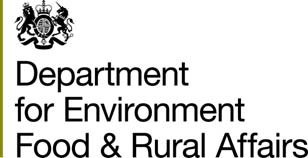The Global Environmental Impacts of Consumption (GEIC) Indicator
Tracking the environmental impacts embedded in commodity consumption.
This dashboard provides estimates of global environmental impacts and risks driven by consumption and production activities. It links the production of over 160 agricultural commodities across 240 producer countries / territories ‘embedded’ within domestic and international supply chains to selected environmental impacts and risks. The dashboard visualises how these impacts are driven by the consumption activities of countries, territories or other 'rest-of-world’ regions (groupings of countries / territories) across years spanning 2005 to 2023.
To navigate the dashboard, please use the drop-down menus below to select the perspective you would like to see and click 'Update Data'. The charts will present the data associated with your choices.
About
This dashboard is provided, free of charge, as a resource for users to explore the sources and sinks of environmental impact and risk associated with commodity supply chains. It is provided as a general resource for any user interested in understanding and hotspotting the Global Environmental Impacts of Consumption. For example, countries may wish to use it – on a voluntary basis – as part of reporting e.g. as a “national indicator” against Target 16 of the CBD Kunming-Montreal Global Biodiversity Framework, and we welcome enquiries on how it can be applied for such purposes. An example of where these data have already been used in the context of a national indicator can be found at the UK Biodiversity Indicator page (this dashboard is a secondary point of release for the UK consumption data, but data for other consumption countries provided on the dashboard are not part of the UK Official Statistic).
The dashboard was developed by the Stockholm Environment Institute York and the Joint Nature Conservation Committee with support from the UK Department for Environment, Food & Rural Affairs (Defra), the UK Research and Innovation’s Global Challenges Research Fund through the Trade, Development and the Environment Hub project (project ES/S008160/1), and the Trase Project. Production of the underlying data set was commissioned and supported by Defra. We are also grateful for collaborations with Florence Pendrill, Chandrakant Singh and Martin Persson (Chalmers University of Technology), Thomas Kastner (Senckenberg Biodiversity and Climate Research Centre) and Alison Eyres, Andrew Balmford and Tom Ball (University of Cambridge) who have provided underpinning data and methodological assistance. Thanks also to Michael Lathuillière at the Stockholm Environment Institute for technical advice and guidance, and to Verity Harris, Charlie Egan and Amanda Otley for support on earlier versions of the data.
We plan to update and improve the dashboard annually as newer data, methods and indicator sets become available.
We have recorded three webinars in 2023, introducing the GEIC indicator. You can watch the recordings linked below to find out more. Please note that development work has continued since this point, so whilst most of the information remains relevant, users should refer to the FAQs and technical documentation for the most up-to-date details.
- Technical introduction – Explains what the indicator is, and about the methods and modelling underpinning it.
- UK policy introduction – Explains what the indicator is, how to navigate the dashboard and how to use the data as an evidence source for UK policymakers.
- Global Biodiversity Framework introduction – The GEIC indicator was a component indicator against Target 16 of the GBF. This webinar explains what it is, how to use it in national reporting, and why you might wish to do so.
Methods
The data used in this dashboard are created within SEI’s Input-Output Trade Analysis (IOTA) framework, built around a hybridised physical-financial Multi-Region Input-Output (MRIO) model (described in Croft et al. 2018, 2025). In this application, IOTA utilises commodity level production and trade data along with monetary financial flows to provide estimates of the movement of goods from national-level points of production through to final consumption, regardless of supply chain length and complexity. These supply chains are extended via the application of environmental impact indicators, which in turn allow for the flows of embedded impacts to be captured.
The results allow for a range of perspectives to be assessed, compared and analysed, from the production or consumption end of the supply chain, across individual or multiple commodities, and over a range of metrics.
The IOTA modelling framework applied in this release and resultant data provided on this dashboard are underpinned by the GLORIA consumption model (see FAQs for full references). Alternative results using GTAP and EXIOBASE as data inputs are available to download from the ‘Get the data’ section for those interested. For further details about the differences between these models please refer to the FAQ section.
Frequently Asked Questions
Get the data
Download the data:
- .CSV
- .Parquet
- .CSV
- .Parquet
- .CSV
- .Parquet
Terms and conditions of use: We make the data freely available for use. Whilst we have undergone steps to check the quality and accuracy of data provided, we provide on an 'as is' basis. The user assumes the entire risk associated within any use made of this information and SEI, JNCC and other partners (including the providers of input data that is used within the GEIC indicator) do not accept any liability for damage arising from the use of the information, and make no representation regarding the advisability or suitability of specific decisions made by the user. If using charts, data, information, graphs or maps from this site, attribution is required. You must clearly attribute the work to the CommodityFootprints.earth platform and provide a link to https://www.commodityfootprints.earth.
Please note that use of the data from GLORIA, EXIOBASE and GTAP must take place in accordance with the Terms & Conditions of these datasets, which – in particular – place restrictions on commercial use. For more details see conditions of use available via the respective data providers:
We use cookies on our site.





